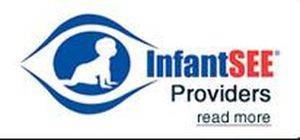In recent years there have been tremendous advances in the field of vision correcting eye surgery which is also known as refractive or laser surgery. Corrective eye surgery offers patients clear vision without the use of glasses and contact lenses. There are a number of types of refractive surgeries that are able to correct different vision problems, so if you are considering surgery here are some of the options you should know about.
LASIK
LASIK (laser-assisted in situ keratomileusis) surgery is perhaps the most well-known refractive surgery today. LASIK can help patients with myopia (nearsightedness), hyperopia (farsightedness) and astigmatism. During the procedure, the doctor makes a flap in the outer layer of the corner to reach the underlying tissue and then uses a laser to reshape the tissue which allows the cornea to then focus light properly. The procedure is usually painless and vision is usually clear within a few hours.
Recent advances in the field have developed subcategories of LASIK surgery such as Bladeless LASIK, which uses a laser rather than a mechanical tool to make the initial flap or Wavefront (custom) LASIK which uses computer mapping to guide the reshaping of the cornea and is able to create a much more precise visual correction for very subtle optical imperfections. There is also a procedure called Epi-LASIK in which following the procedure, the doctor applies a soft contact lens to protect the surgical area, holding the flap in place while it heals.
PRK
PRK (photorefractive keratectomy) also uses a laser to correct mild to moderate myopia, hyperopia and astigmatism. PRK was a precursor to LASIK which eliminated many of the complications of prior surgeries such as glare, seeing halos around lights, blurred vision and regression of vision. Unlike LASIK, the procedure only reshapes the surface of the cornea and not the underlying tissue. Consequently, there is often some discomfort for a couple of weeks until the outer layer of the cornea heals. Additionally, the patient may experience blurred vision during this period of healing. PRK does offer an advantage over LASIK in that there is less risk of certain complications. Wavefront technology is also available for PRK surgeries.
Due to the increased comfort of LASIK there was a period that PRK saw a decline. Recent studies show however that LASIK and PRK have similar long-term success for improved visual acuity and with the assistance of newly developed effective pain medications, PRK has become more popular again as an option.
LASEK
In LASEK or laser-assisted sub-epithelial keratomileusis, the doctor creates a flap smaller but similar but to LASIK, and then uses an alcohol solution to loosen the tissue around the cornea which is pushed aside, and then a laser is used to reshape the cornea itself. In an Epi-LASEK procedure, the doctor may apply a soft contact lens to hold the flap in place to assist in reattaching to the cornea as the eye heals. Patients that undergo LASEK generally experience less discomfort and quicker vision recovery than PRK patients. LASEK may be preferred over LASIK as a safer option for patients with a thin cornea.
Cataract Surgery
Cataract Surgery is a very common refractive surgery that removes the clouded natural lens of the eye and replaces it with an artificial lens called an IOL (intraocular lens). Many patients these days will receive a lens that also corrects any refractive error they have such as nearsightedness, farsightedness or presbyopia.
RLE
RLE or refractive lens exchange is a non-laser procedure the replaces the natural lens of the eye. This is the same as the surgery that is used to treat cataracts, ,yet for non-cataract patients, RLE is used to correct severe nearsightedness or farsightedness. The procedure involves the doctor making a small cut in the cornea, removing the natural lens and replacing it with usually a silicon or plastic lens. It is particularly useful for patients with minor corneal problems such as thin corneas or dry eyes.
RLE is more risky than the other procedures mentioned and can affect the patient’s ability to focus on close objects, possibly requiring reading glasses following the procedure. However, in cases of severe vision correction it is often the preferred method.
PRELEX
PRELEX or presbyopic lens exchange is for patients with presbyopia, the age-related condition in which you lose the flexibility of your lens and can no longer focus on close objects. Patients that prefer not to wear reading glasses or multifocals, can opt for a procedure in which the doctor removes the natural lens of your eye and replaces it with a multifocal artificial lens. This procedure is often done in conjunction with cataract surgery.
Phakic Intraocular Lens Implants
Phakic IOLs are implants that are used for individuals with very high nearsightedness who do not qualify for LASIK or PRK. The implant is attached to your iris or inserted behind your pupil, while the natural lens remains intact. Because this is a procedure that involves the inner eye, it is more risky than LASIK or PRK and is therefore also typically more expensive.
Conductive Keratoplasty (CK)
CK uses a hand-held radio wave device to shrink tissue on the cornea to reshape it. The procedure is typically used to treat mild farsightedness and presbyopia, particularly for patients who have already undergone LASIK.
Any surgical procedure has risks and may have some side effects or complications that you should research before you decide to go ahead with the surgery. Nevertheless, as technology advances these complications are being significantly reduced making refractive surgery a great option for vision correction in many patients.



